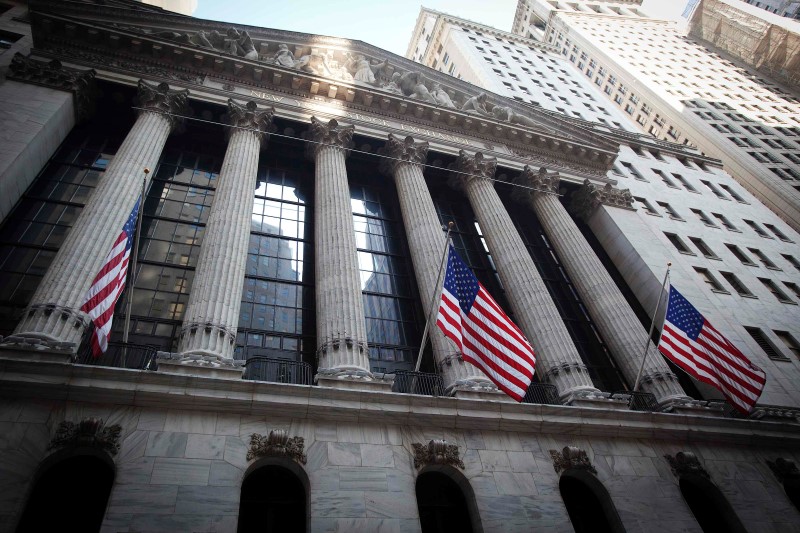Friday’s all important non-farm payrolls report will be the highlight of the economic
calendar in the coming week as markets try to gauge the future direction of U.S.
interest rates. The European Central Bank is likely to deliver a rate cut that will
put
the Eurozone on a diverging rate path from the U.S. Meanwhile, OPEC is to decide on
output cuts and the Bank of Canada will deliver its latest rate decision. Here's
your
look at what's happening in markets for the week ahead.
1. Jobs numbers
Fridays closely watched nonfarm payrolls report is expected to show that the U.S.
labour
market remained strong again in May. Economists are expecting the economy to have
added
185,000 jobs, a modest uptick from the prior month.
Investors had been worried that an overly strong economy might prevent the U.S.
Federal
Reserve from lowering rates this year at all, or even require a rate rise. But those
concerns were alleviated last month, albeit temporarily, by data showing slowing
inflation and a cooling labour market.
Still, policymakers have urged patience on rate cuts, saying they would like to see
several months of data to be sure inflation is heading back towards their 2% target.
The
employment report could prove the economy is losing steam if it shows the slowdown
in
job creation has continued.
2. ECB rate decision
The ECB is all but certain to become the first major central bank to cut interest
rates
this cycle on Thursday.
With a 25 basis point rate cut all but promised by policymakers market watchers will
be
focusing on what ECB President Christine Lagarde has to say about what comes next.
Inflation in the bloc's dominant services sector remains sticky and its economy is
recovering faster than expected, while a closely watched wage growth figure
accelerated
last quarter, leaving the outlook beyond June less certain.
Markets are still expecting the ECB will cut rates multiple times this year compared
the
Fed and the Bank of England though bets on future moves have been trimmed back.
They now expect two cuts and less than a 50% chance of a third - compared with three
when
the ECB last met and at least five at the start of the year.
3. OPEC output cuts
OPEC+ will likely agree on Sunday to prolong its deep oil output cuts into 2024 and
possibly 2025 Reuters reported, as the group seeks to shore up the market amid tepid
global demand growth, high interest rates and rising rival U.S. production.
Oil prices are trading near $80 per barrel, below what many OPEC+ members need to
balance
their budget. Worries over slow demand growth in top oil importer China have weighed
on
prices and oil market analysts expect OPEC+ to extend cuts to balance supply.
The Organization of the Petroleum Exporting Countries and allies led by Russia,
together
known as OPEC+, has made a series of deep output cuts since late 2022.
OPEC+ members are currently cutting output by a total of 5.86 million barrels per day
(bpd), or about 5.7% of global demand.
4. Wall Street
Despite all three major U.S. stock indexes posting losses last week they still ended
the
month higher, with the S&P 500 rising about 4.8%, the Nasdaq jumping 6.9% and
the
Dow climbing 2.4%.
While it’s been a banner year for the major U.S. stock indexes, one economically
sensitive corner of the market remains a sore spot.
The Dow Jones Transportation Average has fallen about 5% so far this year and some
investors have said the struggles for the 20-stock transport index - which includes
railroad operators, airlines, package shipping companies and trucking firms - could
signal weakness in the economy or prevent the broader market from making significant
further gains unless they bounce back.
The Dow transports are "a barometer for future economic activity," Chuck Carlson,
chief
executive officer at Horizon Investment Services told Reuters. "They may be
indicating
that while a recession isn't imminent, that there is probably a slowdown in the
economy
that's ahead here."
5. Bank of Canada
The BoC is widely expected to deliver a 25-basis point rate cut at its upcoming
meeting
on Wednesday after data on Friday showed the country’s economy expanded at a slower
than
expected pace in the first quarter.
The GDP report indicated that Canada's economy did not rebound from a soft patch last
year as strongly as data initially suggested and may convince the central bank to
start
lowering borrowing costs.
"All ducks appear to be in a row for the Bank of Canada to kick-start the policy
easing
cycle and lower the overnight rate by 25 basis points to 4.75% on Wednesday," RBC
said
in Friday note.
At the central bank’s last meeting in April Governor Tiff Macklem noted that the
requirements for a rate cut appeared to be in place but that officials needed to see
more evidence on slowing inflation.










